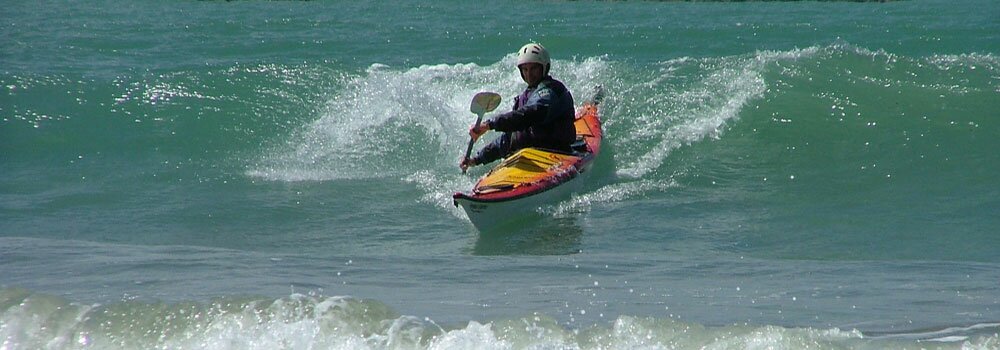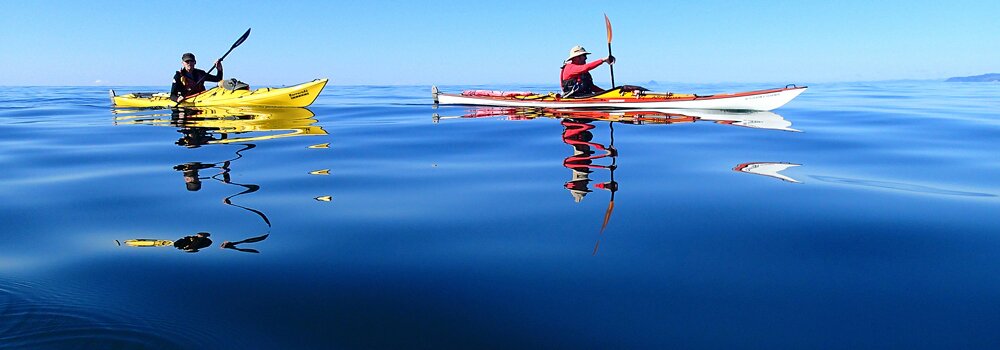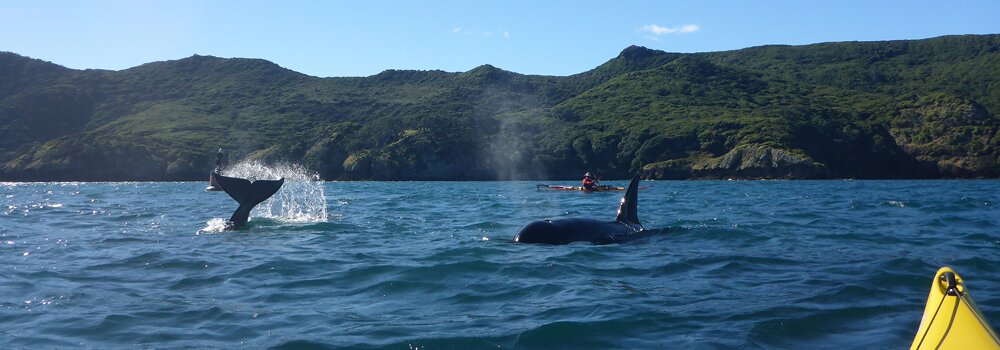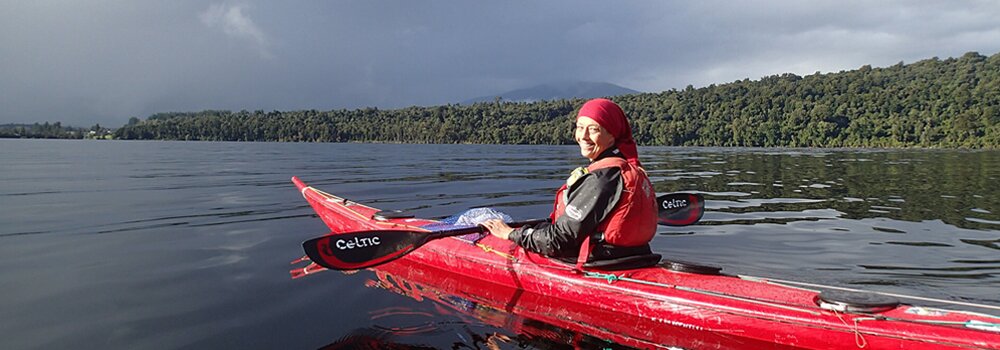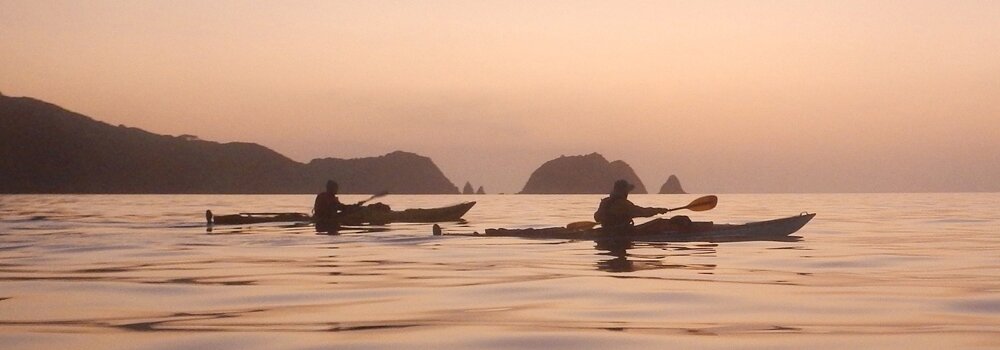Rescues – how to
Two kayaks and involving one capsize
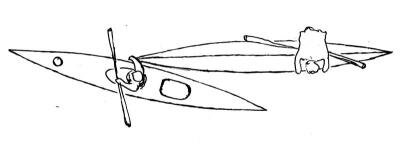
The description below shows how to do the most basic recovery. There are T, X, H rescues, dragging the rescued kayak over your deck, etc. etc.
What is shown here is a BASIC method. Something anyone can do even without practising it though practise is definitely encouraged.
Important – the less time anyone is in the water the better. It is common for those who capsize not to be dressed for immersion.
Important – once the person is back in their kayak you have only done half the job. You now need to get them away from what caused the capsize in the first place. This is in the second section but is just as important.
You are paddling along and your companion capsizes.
Section 1
The kayaks are shown facing the same way. The author has done it a number of times and prefers it this way because when it comes to Section 2, everyone is going the same way.
1.) Get to their bow. It doesn’t matter which way you are facing, same direction or the opposite direction.
2.) Hopefully they are still with or near their kayak. Preferred is to have them draped over the upturned hull between the cockpit and stern.

The left paddler is grabbing the bow and the right paddler is about to throw their weight on to their kayak’s hull and pull towards themselves.
3.) Grab the bow and call “Heave.” Lift the bow as much as possible as they bear down on the kayak and pull it over towards them.
4.) Move towards the cockpit and grab the decklines just in front of the cockpit. If you can get your arms under the lines do so with the lines against your inner elbows and hands linked. To release just fling your arms straight. You should by then have both paddles under your arms against your body. Alternative is let them drift but on a leash.
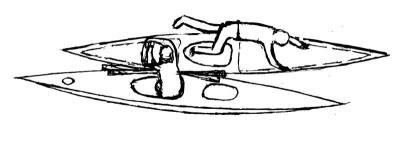
The paddler on the left has their arms wrapped round the decklines and the paddles are shown under their body but could be under their arms (as shown) or floating on a leash
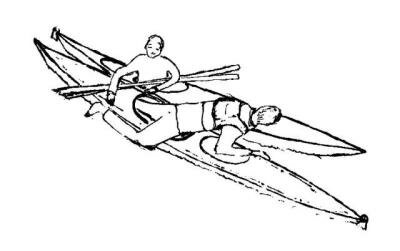
Here the kayaks are facing in opposite directions
(Note they could have been facing the same way) and the paddles are under the arm of the rescuer who is holding the decklines of the other kayak
5.) The person in the water faces aft, a leg into the cockpit (Heel Hook) and pulls themselves on to the aft deck facing aft. Are they cold? Tell them to wipe their nose on the deck – that means they are as low as possible.
F, F, F, F – Facing aft, Face down, Feet into the cockpit first.
6.) Both feet into the cockpit and slide into it. Once in as far as possible they rotate to face up and are now sitting in the cockpit.

Though there are still two kayaks at this point, only the rescued one is shown here with the paddler about to rotate upright having slid into their cockpit as far as possible
7.) They start pumping with your or their pump. If waves are lapping in fit the sprayskirt and put the pump in through one edge or down the body tube.
Section 2
This is where you move them to somewhere safer out of the conditions that caused the event. If facing the same way get them to move down to your stern still holding your kayak. Fasten their bow to your kayak beside your cockpit. Start paddling, reaching over their hull.

From left to right – Pull Tow, Push Tow both facing the same way, Push Tow facing each other. Note in this one (rescued kayak moving astern) that the rescued kayak’s rudder must be up. All kayaks are moving towards the top, of the page, the direction of the arrows. A is the kayaker doing the work, the other kayaker has been rescued
If facing in opposite directions during the recovery, either do the same as above in the right hand picture where they are holding your bow and you push them or, more awkwardly, move your kayak round their bow and back to side by side and tow as in the left hand picture.
Finally
Never ever leap into the water to help anyone. This has happened a number of times with the result that there were two deaths.
If, unfortunately, you are both in the water, raft the kayaks and have one person hold them, draped over their kayak and holding the other kayak’s cockpit. The other person then does an aft deck recovery into their kayak.
Sandy Ferguson
The above is available as Rescues – 2 Kayaks (PDF 240 KB).
Here is a good PDF on Towing (PDF 760 KB).
Two YouTube videos that show –
How to do a linked tow.
How to make a rafted towline.
Kayarchy Towing has “how to” information about towing.
Rescues from the KASK Handbook
The Rescue section of the Kask Handbook A Manual for Sea Kayaking – Rescues (350 KB PDF).
KASK's aims are to:
1. Promote and encourage the sport of sea kayaking2. Promote safety standards
3. Develop techniques and equipment
4. Deal with issues of coastal access and protection
5. Organise sea kayak forums around the country
6. Publish the Sea Canoeist Newsletter and the KASK Handbook
